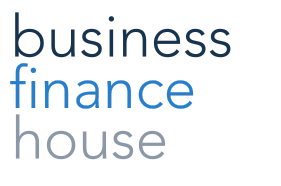When businesses need immediate funding, quick business loans provide a fast and convenient solution. However, while interest rates often take center stage, the total cost of business loans extends beyond just the advertised percentage. Hidden fees, repayment terms and additional charges can significantly impact how much you actually pay over time. In this blog, we’ll break down the true cost of fast business loans, including fees, repayment structures and how to calculate the real price of borrowing.
The True Cost of Quick Business Loans
Interest Rates
Interest rates determine the percentage of the loan amount you’ll pay in addition to the principal. However, different factors influence the actual rate you receive:
- Fixed vs. Variable Rates: Fixed rates remain the same throughout the loan, while variable rates fluctuate based on market conditions.
- Risk Assessment: Lenders assess your creditworthiness, business revenue and financial stability before determining your rate.
- APR vs. Interest Rate: The Annual Percentage Rate (APR) includes both interest and additional fees, providing a more accurate cost estimate.
Loan Origination Fees
Lenders charge loan origination fees as a percentage of the loan amount to cover processing costs. This fee typically ranges between 1% to 5% and is often deducted from the loan before funds are disbursed.
Early Repayment Penalties
Paying off your loan early might seem like a smart move, but some lenders impose early repayment penalties to compensate for lost interest earnings. Check your loan terms to ensure prepayment won’t cost you more than expected.
Late Payment Fees
Missed or delayed payments can lead to late payment fees, which not only increase your costs but also damage your credit rating. Setting up automatic payments can help avoid these extra charges.
Administrative and Service Charges
Some short-term business financing agreements include monthly service fees or administrative charges, adding to the total loan cost. Always review the fine print before signing a loan agreement.

How Loan Terms Affect the Total Cost
Loan Duration and Total Interest Paid
Longer loan terms might mean lower monthly payments, but they also result in higher overall interest. Shorter loans, while more expensive on a monthly basis, often reduce the total amount repaid over time.
Balloon Payments and Lump-Sum Settlements
Some business loans come with balloon payments, where a large portion of the loan is due at the end of the term. This can strain cash flow if not planned for in advance.
Monthly vs. Weekly Repayment Schedules
Lenders may offer weekly or monthly repayment schedules and the choice impacts total interest paid. While weekly payments help reduce interest faster, monthly payments offer more flexibility in managing cash flow.
How to Calculate the Total Cost of a Quick Business Loan
To get a true sense of your loan’s total cost, use this formula:
Total Loan Cost = Loan Amount + Interest + Fees (Origination, Admin, Late Fees, Early Repayment, etc.)
Alternatively, use an SME loan cost calculator to estimate total repayments and compare lenders before committing to a financing option.
While quick business loans offer a fast funding solution, their costs go beyond interest rates. Understanding fees, repayment structures and loan terms can help SMEs make informed financial decisions. Always compare multiple options, read the fine print and calculate the total cost before choosing a loan.
Let Business Finance House help you secure the right loan for your business needs. Contact us today to explore your options!






